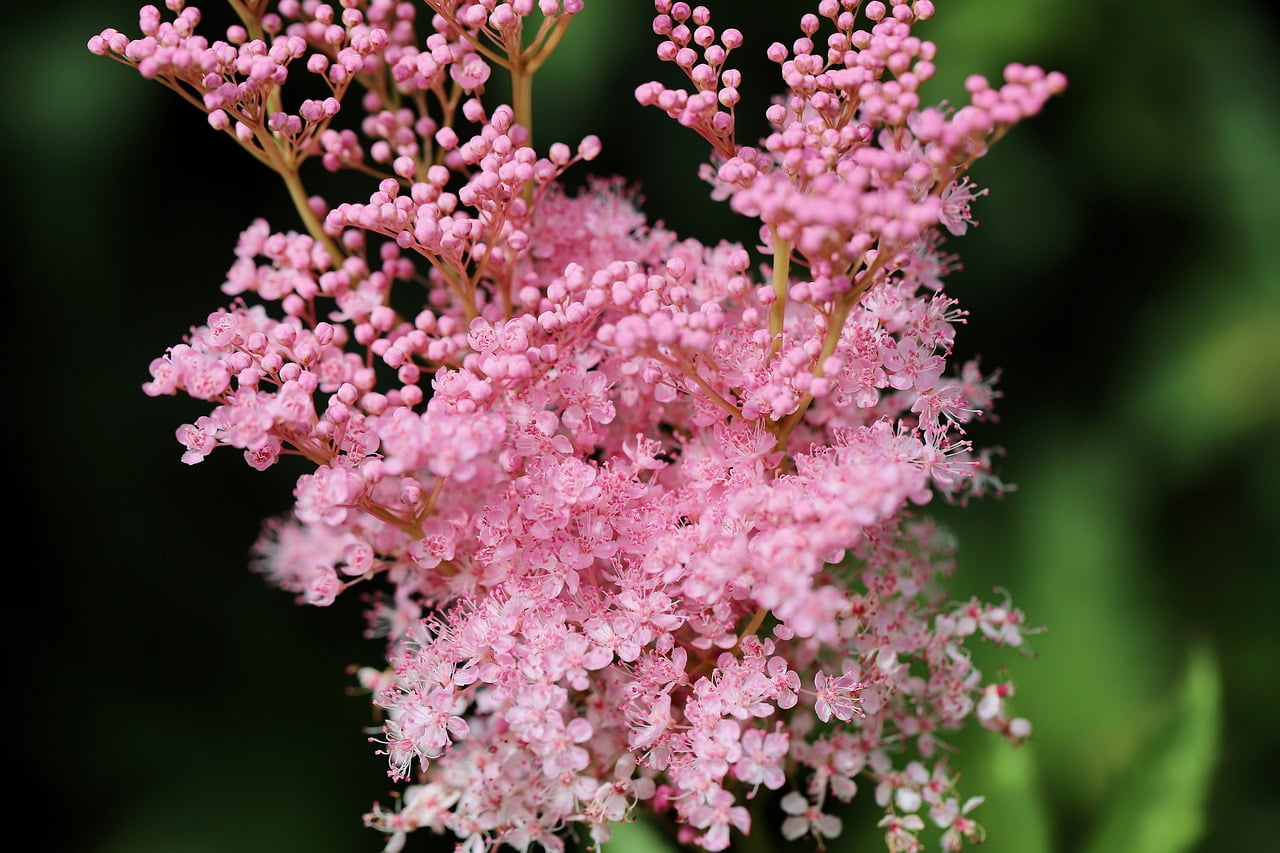
Understanding Filipendula
Filipendula, often referred to as meadowsweet or queen of the prairie, is a genus of herbaceous perennials that graces gardens with its elegance and charm. With over ten species to choose from, Filipendula offers a variety of colors and sizes, making it a versatile addition to any garden.
Choosing the Right Species
Selecting the appropriate Filipendula species is crucial to ensure your garden thrives. Here’s a closer look at some popular options:
- Filipendula ulmaria: This native species, also known as meadowsweet, boasts clusters of creamy-white, fragrant flowers. It thrives in damp, marshy soils, making it an excellent choice for rain gardens or areas with consistent moisture.
- Filipendula rubra: If you’re looking for a splash of color, Filipendula rubra, or the queen of the prairie, is a delightful choice. It features striking pink blooms that add vibrancy to your garden. This species prefers well-drained, sunny locations, so it can thrive in areas with more direct sunlight.
- Filipendula purpurea: For a touch of drama, consider Filipendula purpurea. Its deep purple foliage contrasts beautifully with its creamy-white flowers. This variety enjoys partial shade and is a fantastic addition to shaded borders.
Planting Filipendula
Once you’ve chosen your preferred Filipendula species, it’s time to get your hands dirty and plant them in your garden. Follow these steps for successful planting:
Selecting the Location
Filipendula thrives in partial shade, making it an ideal candidate for woodland gardens or areas with dappled sunlight. When choosing a location, consider the amount of sunlight the area receives throughout the day. Avoid planting Filipendula in areas that receive harsh afternoon sun, as this can scorch their delicate leaves.
Preparing the Soil
Proper soil preparation is essential for the success of your Filipendula plants. Work organic matter, such as compost or well-rotted manure, into the soil to enhance its fertility and moisture-retaining capabilities. Filipendula prefers slightly acidic to neutral soil, so ensure the pH level is within this range.
Planting Depth
When planting Filipendula, dig a hole that’s deep enough to accommodate the plant’s root ball. Place the Filipendula in the hole at the same depth it was in the nursery pot. Be sure to space your plants at least 2-3 feet apart to allow for proper air circulation and prevent overcrowding as they grow.
Care and Maintenance
Filipendula may be relatively low-maintenance, but it still requires some care to ensure it thrives and produces an abundance of blooms:
Watering
Keeping the soil consistently moist is essential, especially during the growing season. However, be cautious not to overwater, as Filipendula does not tolerate waterlogged conditions well. Use a soaker hose or drip irrigation to provide consistent moisture without wetting the foliage.
Mulching
Applying a layer of organic mulch, such as shredded bark or compost, around the base of your Filipendula plants serves several purposes. It helps retain soil moisture, suppresses weeds, and moderates soil temperature. Just ensure the mulch doesn’t touch the plant’s stem directly.
Fertilizing
Fertilize your Filipendula plants in the spring with a balanced, slow-release fertilizer. This provides the necessary nutrients for healthy growth and vibrant blooms. Avoid over-fertilizing, as this can lead to excessive foliage growth at the expense of flower production.
Pruning
Regular pruning is beneficial to Filipendula plants. Removing spent flowers promotes continuous blooming, and trimming any dead or damaged foliage helps maintain the plant’s overall health and appearance. Prune your Filipendula in the late spring or early summer.
Pest and Disease Control
One of the many advantages of growing Filipendula is its resilience to most pests and diseases. These plants are relatively pest-free and disease-resistant. However, keep an eye out for common garden pests such as aphids and snails. Should these pests become an issue, consider using natural remedies or environmentally friendly pesticides to address the problem without harming the environment.
Conclusion
In conclusion, Filipendula is an excellent choice for gardeners looking to add grace and beauty to their landscapes. With a variety of species to choose from, these perennials can thrive in different conditions and provide delightful blooms year after year. By following the guidelines outlined in this article, you can confidently plant and care for Filipendula in your garden, creating a vibrant and enchanting outdoor space.
FAQs
- Can I grow Filipendula in full sun?
While Filipendula prefers partial shade, some species can tolerate morning sunlight. However, avoid planting them in areas with intense afternoon sun to prevent scorching. - Do Filipendula plants attract pollinators?
Yes, Filipendula’s fragrant blooms are known to attract bees and butterflies, making them a valuable addition to pollinator-friendly gardens. - How often should I fertilize my Filipendula plants?
Fertilize your Filipendula once a year in the spring using a slow-release, balanced fertilizer to support healthy growth and blooming. - What is the average lifespan of Filipendula plants?
With proper care, Filipendula can thrive for 10-15 years or even longer, making them a long-lived addition to your garden. - Can I propagate Filipendula from seeds?
While it’s possible to grow Filipendula from seeds, it’s generally more reliable to propagate them through division in the spring or fall, ensuring healthy and consistent growth.